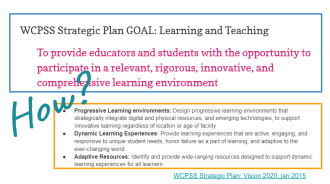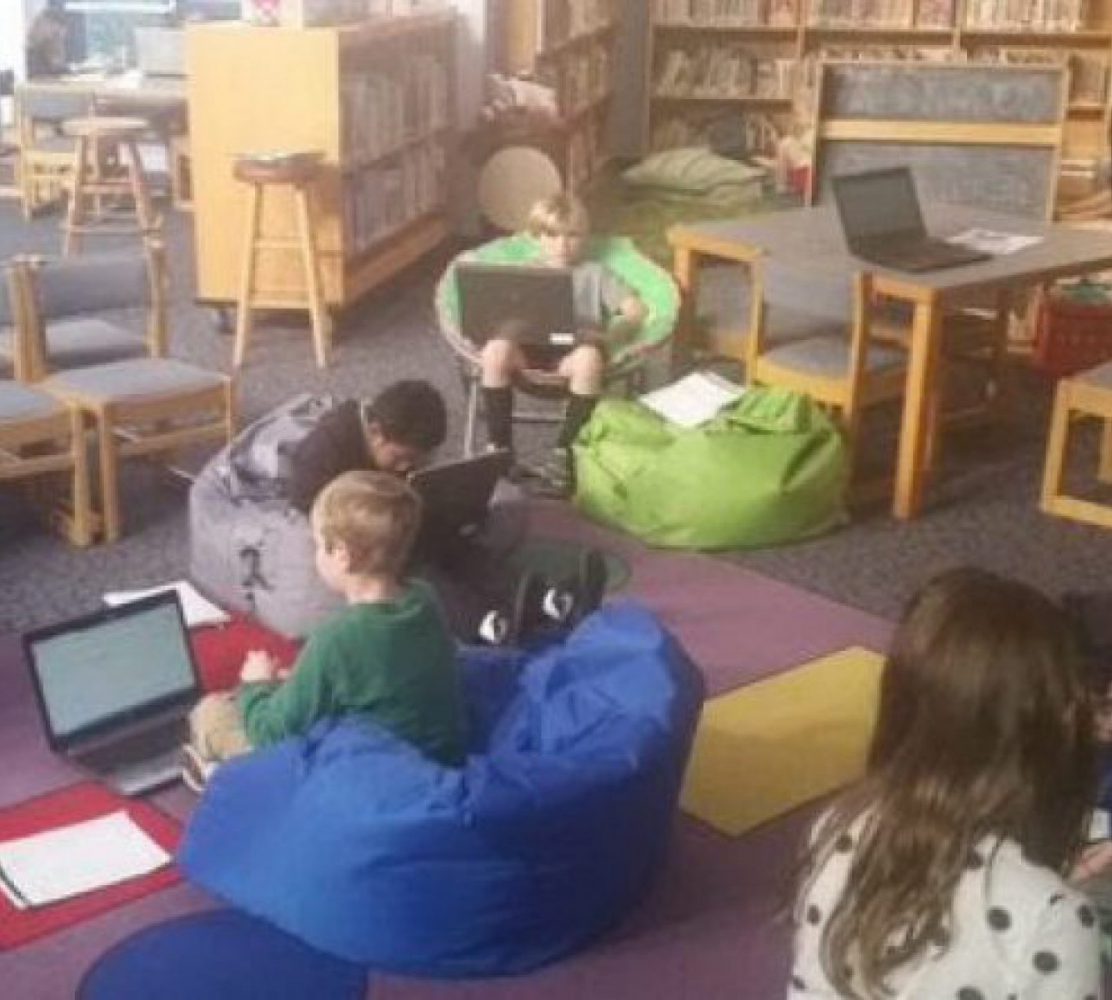I don’t usually do this; blog on a school night. Especially after my work day involves supporting teachers and administrators with ways they can ultimately impact student learning experiences. Blogging often keeps me up way too late, crafting just the right ways to express all the “wonderful” I experienced in a day. But if I keep not sharing by blog, not enough people get to share in the awe that is happening around us. This email was one I sent to a principal after an experience “I” had in his school one afternoon. But it only reached him.
Hi,
I feel compelled to email you tonight because if this were a Friday night, I would be up until 2am crafting a blog post titled, “Makerspace: Just trust the kids!”. Since I can’t afford that sleep schedule on a Monday night, I am emailing instead.
I was at your school tonight until after 5pm with some kids who did NOT want to leave and asked about coming back tomorrow…or every day. I really think your school’s makerspace training happened tonight, live with kids, and no one was there to see it.
[One of my partners] needed some more footage for our maker video and he had no “creating the curriculum” work, as I call it. We pulled in [four kids] from the aftercare program and asked them to work together. Since the children represented two different grade levels, and both grades were studying animals in EL (English Language Arts), they were going to make a gecko. Their original plan was sketched on the whiteboard. The only parameters placed on them were to be respectful (of each other and the space) and safe. They were invited to use any material they could find and confirmed that they could dig through the boxes even….the WOW factor was amazing when they were told YES, even the boxes!
Long story short, what was a gecko became an “everything animal”; more specifically a predator. And they were able to point to all the animal’s features they created to justify the mixture of animals. They simply could not stop themselves from adding more.
And then the best part…
They started using real vocabulary. They were not asked to or probed to do so. They had an idea for a “habitat” and a shelter…then a fish happened as a food source…or as one of the girls realized, prey for the predator. Clearly, they had enough background knowledge and freedom to create that they couldn’t help but use familiar terms. If you walk in the makerspace, you will see what maybe only they can recognize, but you will also see the vocabulary labels they added that they were so proud of! And it was all created from nothing fancy and required no Purchase Order to outfit their stockpile of supplies.

Too many stakeholders and others who would have benefited from this story never heard it. And an equally inspiring experience happened again tonight.
So, I blog. After a day that began at 8:00am and ended 5 schools later at 6:00pm.
And this post begins here.
My Professional Development Plan for this school year includes makerspaces; spreading the word, setting them up, developing start-up protocols, creating experiences for adults. Tonight was a great one! I was charged to expose a group of grade level reps at a school in my district to makerspaces.
- What they are.
- Why they are important to the future work force.
- How they relate to our school’s strategic plans and beliefs.
And the biggest concern of all
- How it all ties into the curriculum standards.
We read “What to do with an Idea” by Kobi Yamada.
We looked at the district strategic plan.

We considered quotes from George Couros’s (@gcouros) blog post From The Principal of Change: Stories of learning and leading, The PBL Playbook and how PBL can Help You Innovate Inside the Box, George Couros, nov. 18, 2018. (blog article link)
“When we praise failure, look for grit, and assess the process (instead of only the final product) then students are empowered to share their work and grow as learners in a variety of ways.”
“When we make time for reflection/self-assessment (look at Hattie’s work), sharing, and making/tinkering our students (and our teachers) actually go out and TRY new things.”
And my favorite:
“If we don’t allow for inquiry, choice, collaboration, digital tools, failing, then usually only the people in charge are allowed to have ideas.”
We continued.
I shared with my adult audience the challenges I give students…as a way to show teachers to trust that their hard work and planning IS getting through to their learners, I give students the raw curriculum standards; unedited and never watered down. I charge the students with picking a curriculum standard they have learned or will be learning and ask them to SHOW me what that standard looks like with supplies and materials from the makerspace; consumables, digital tools, games, etc. They never disappoint with details I never would have thought to include in a rubric. And teachers are often inspired by this unexpected exercise. They almost grow courage inside themselves from witnessing it.
And then the teachers are asked to do the same.
So tonight, I presented teachers with this same exercise. I showed them images and video clips of students reading curriculum standards and explaining or creating how makerspace materials and tools can bring life to these concepts. Next, I gave the teachers access to written standards for grades K-5. I did not tell them to work alone or in groups or how to divide themselves up. They were given the guidelines I expect of students; respect the space, respect eachother, leave the space in better condition than that which you found it. Then they were released to work.

The inevitable happened; “stuff” I didn’t plan or imagine would occur. The unplanned and unimagined. It always does.
Just like when a student who was told he couldn’t build with legos was finally allowed to proceded to build a fire truck and explained how the parts of the truck compared to the human body. (@ctuttell)
Just like when the after school kids drew a plan for a gecko and instead built and labeled a predator, prey, shelter, and habitat without being prompted to. They just KNEW these things and “stuff” made them do it!
Tonight, all I asked teachers to do was choose a curriculum standard and use “stuff” to illustrate it. They rose to the challenge and, subliminally, they became deep in conversations about vertical alignment. The room was rich with discussions about what each of them taught at their grade level and the constructing of projects that fit multiple grade levels…and having fun at 5pm after school!
It was during this experience that it occurred to me that every verticle alignment training I have ever participated in happened in chairs, at tables with strips of paper and perhaps a whiteboard. Never in my 19 ½ years of teaching did it occur to me that the makerspace is the place for this! I can guarantee the teachers I was with tonight will recall standards in grade levels not their own much longer and more vividly than ever before.
I didn’t predict this level of learning would surface from this presentation I crafted. But it did. I have no reason at this point to be surprised. But I was surprised.
Although students don’t make THIS connection during their maker experiences, they ALWAYS demonstrate more learning than I had expected of them. It is simply unavoidable. When we take away the rubric’s minimum requirements and put a halt to listing expectations, you WILL get more than you bargained for.
And better yet…
When we trust that we are teaching above the standards and doing it well in a traditional setting in the traditional ways, we HAVE to trust that students will be able to show us in unconventional ways; ways that will blow our minds and make us drop our jaws in awe.
So here is my school night blog post, “Makerspace: Just Trust the Kids!” But maybe a title edit is called for.
Just trust YOUR TEACHING! It IS enough. Let the kids prove it!







I’m so glad you wrote about this. Maker is another form of reflective practice which deepens learning. Glad the teachers got to experience magic.
LikeLike
It IS very much a reflective practice. One thing I didn’t write that is so true is that you can do a self assessment as a teacher one of two ways. You can check of always/sometimes/never boxes, or you can listen to your students explain a maker project to you or another classmate. One is far more rewarding AND telling.
LikeLike
Tanya, well with so much thought and reflection about what touve experienced during this Maker Journey. Very excited to see the video!! Thanks for sharing!
LikeLike
Coming from a retired teacher’s perspective, the most inspiring memories are returns from the students evolving from their enthusiasm. There is much to be learned in any and all situations in life. Through inviting options rather than funneling toward a specific outcome, individuals engage in process rather than outcome. This was an inspiring read. Keep up the good work. This sort of “open outcome” thinking returns the joy of teaching to the teacher. ALWAYS, ALWAYS evaluate individual process. It is validating and inspires learning. And it sure does allow the teacher to recognize and appreciate the uniqueness of his/her students.
LikeLike
Miss you so much!!!!
Keep in touch!
Sherry
________________________________
LikeLike